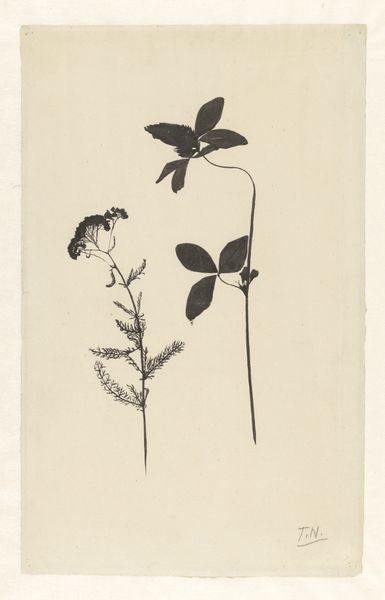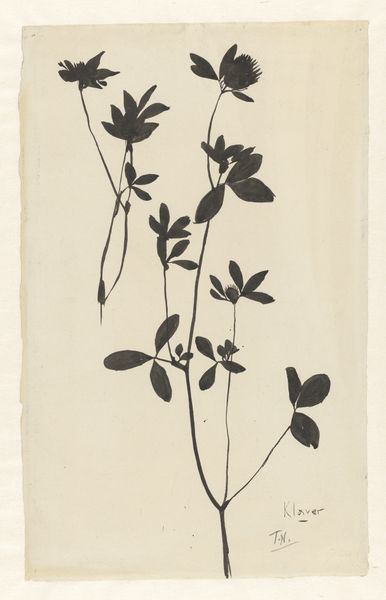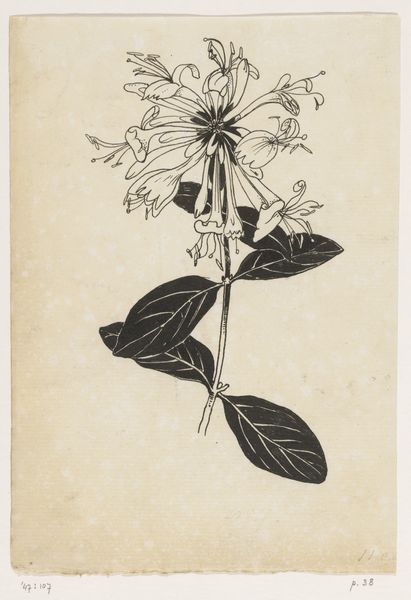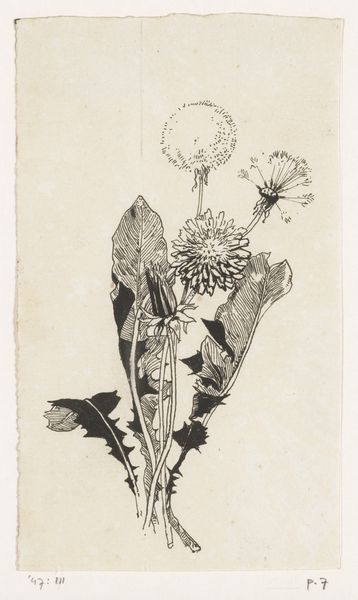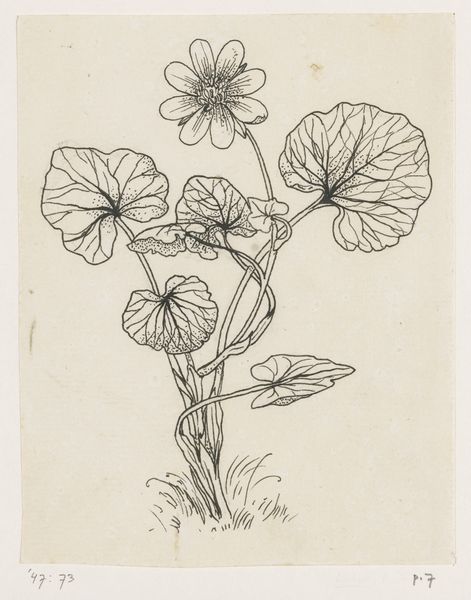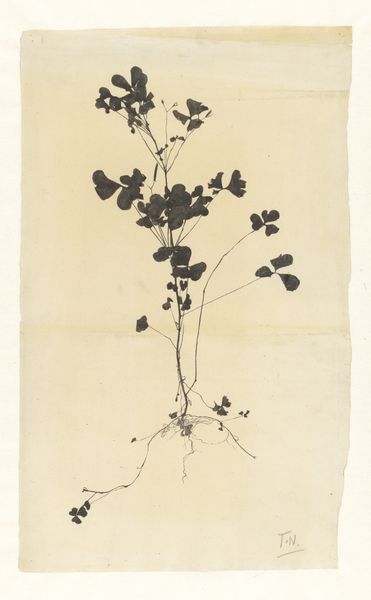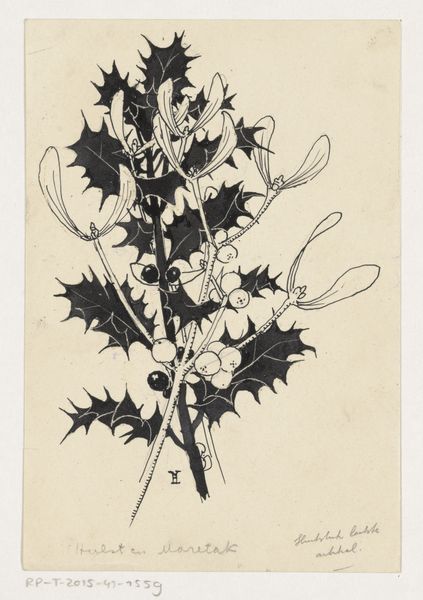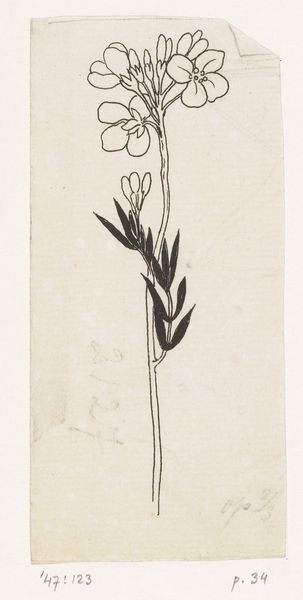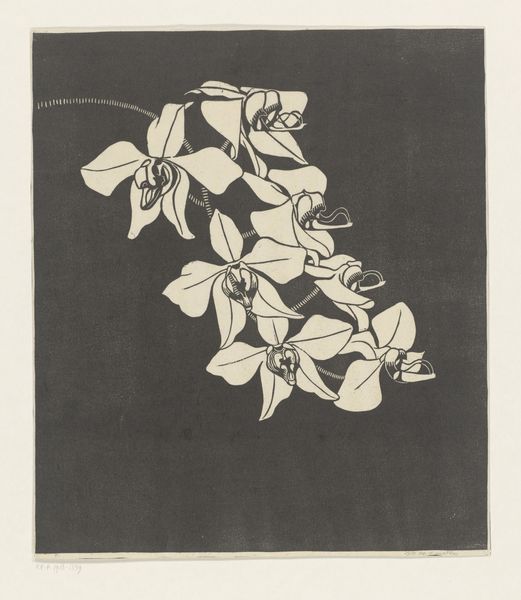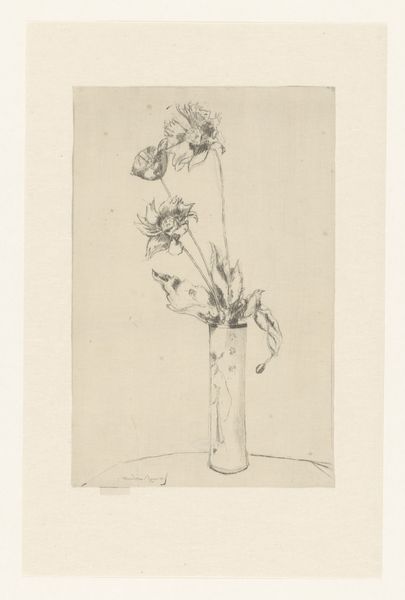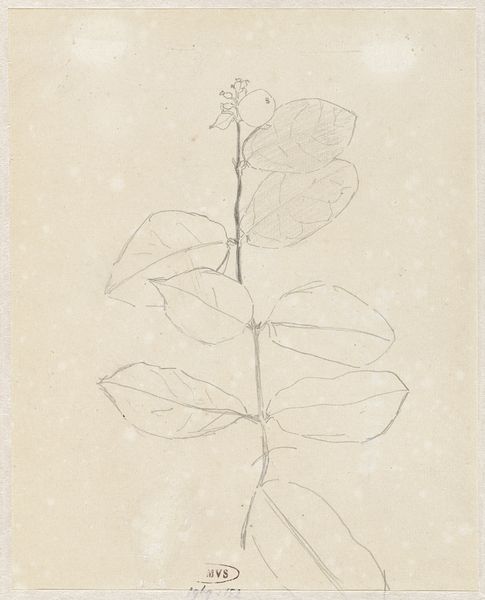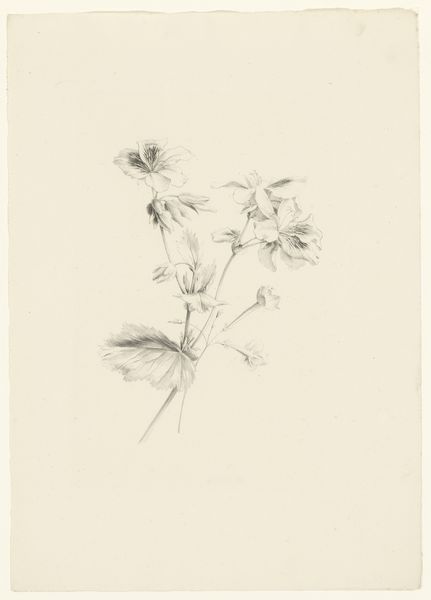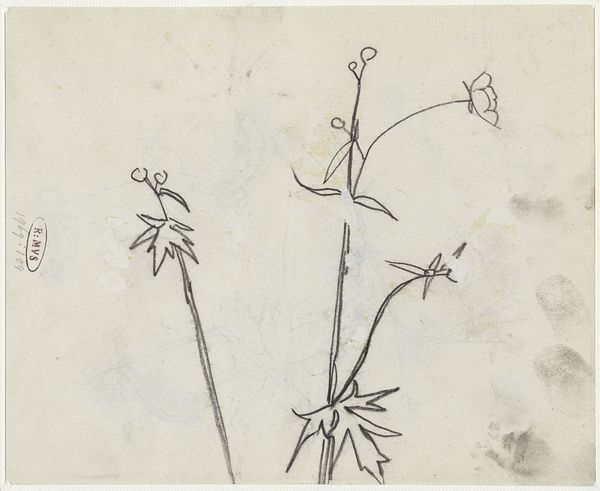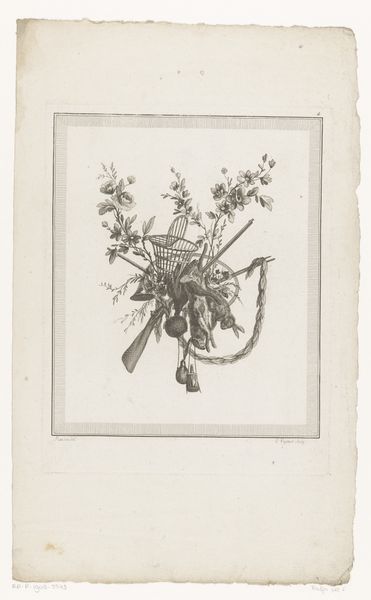
drawing, ink
#
drawing
#
ink
#
line
Dimensions: height 125 mm, width 108 mm
Copyright: Rijks Museum: Open Domain
Curator: Welcome. We’re standing before Willem Wenckebach's "Clematis," a drawing created before 1893. It's held here at the Rijksmuseum, executed in ink, primarily employing line work. Editor: Immediately striking is the elegant simplicity, a study in contrasts. The stark black ink against the aged paper creates a delicate tension, almost as if the bloom is poised to detach from the plane. Curator: I appreciate how this clematis becomes a site to examine the complex relationship between nature and colonialism, particularly within botanical studies of the era. The very act of depicting flora often served colonial interests, documenting and cataloging resources within occupied lands. How might this drawing participate in such a tradition, even if subtly? Editor: From a purely aesthetic viewpoint, I'm intrigued by Wenckebach's restraint. The reduction to essential lines allows for an interplay of positive and negative space. It is the very economy of detail that accentuates the clematis' ethereal nature, no? There is almost an invitation to imagine what is not rendered—the colors, textures, and, of course, the plant's full context. Curator: Absolutely. And understanding Wenckebach's position in relation to broader scientific and social trends is key. The clematis could be seen as a symbol appropriated to uphold existing hierarchies. Botanical art frequently justified land exploitation under the guise of objective scientific inquiry. What ideological function, then, does this representation serve? Editor: Interesting questions, indeed. Looking closely at the composition, there is the contrasting density of the petals at the top to the stark, singular, heavy line that forms the stem, a dynamic leading the viewer's eye upward. The distribution creates a compelling rhythm, drawing the eye towards the light openness of the flower heads. Curator: Considering all that, this image underscores that any portrayal of the natural world is inescapably bound to its historical and socio-political context. Editor: A point well-taken and one that enriches my formal viewing of this composition, indeed. Thank you for guiding my perception toward the richer meanings inherent in what appears at first glance to be a simple study of nature.
Comments
No comments
Be the first to comment and join the conversation on the ultimate creative platform.
